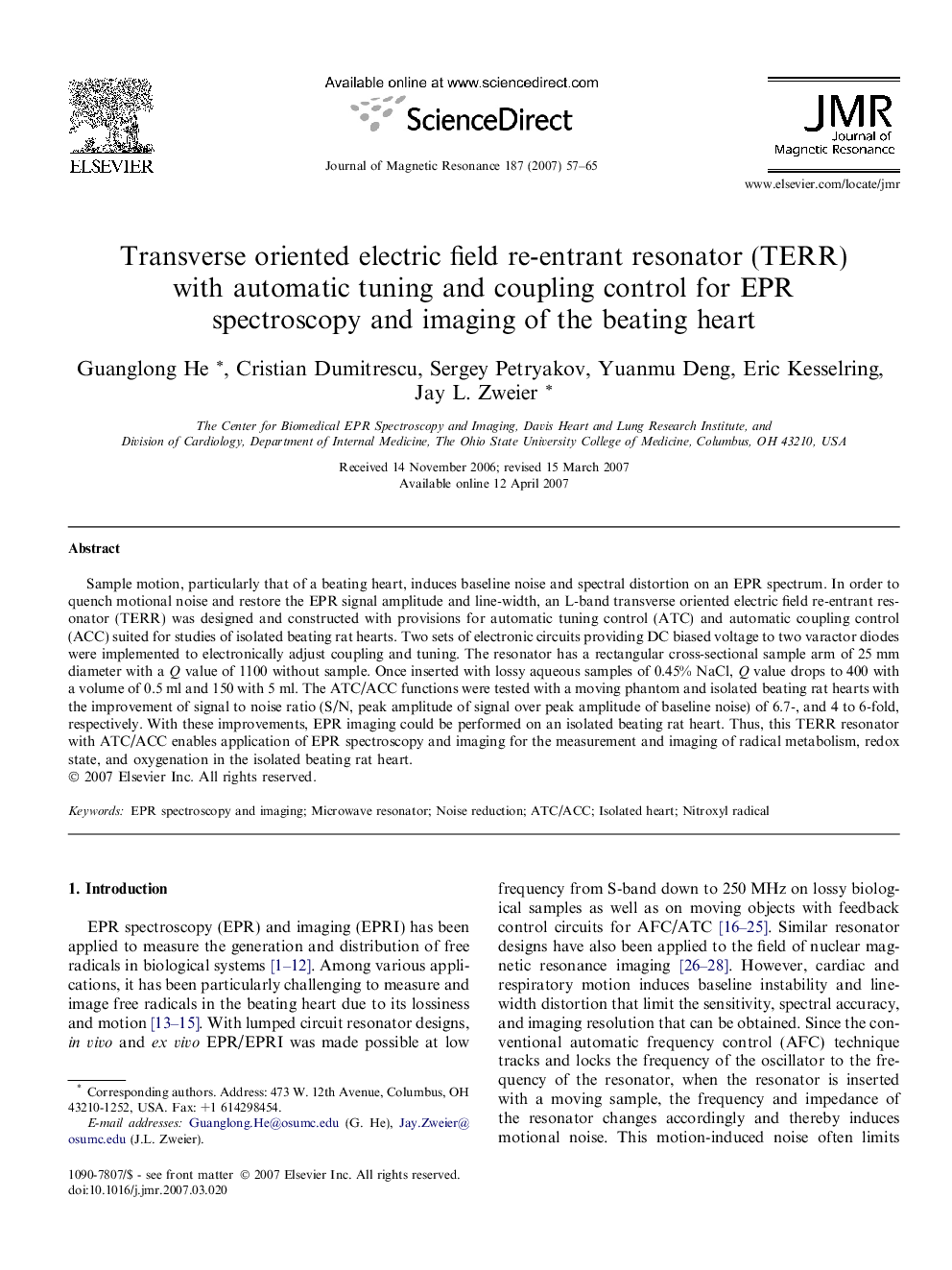| Article ID | Journal | Published Year | Pages | File Type |
|---|---|---|---|---|
| 5407355 | Journal of Magnetic Resonance | 2007 | 9 Pages |
Abstract
Sample motion, particularly that of a beating heart, induces baseline noise and spectral distortion on an EPR spectrum. In order to quench motional noise and restore the EPR signal amplitude and line-width, an L-band transverse oriented electric field re-entrant resonator (TERR) was designed and constructed with provisions for automatic tuning control (ATC) and automatic coupling control (ACC) suited for studies of isolated beating rat hearts. Two sets of electronic circuits providing DC biased voltage to two varactor diodes were implemented to electronically adjust coupling and tuning. The resonator has a rectangular cross-sectional sample arm of 25Â mm diameter with a Q value of 1100 without sample. Once inserted with lossy aqueous samples of 0.45% NaCl, Q value drops to 400 with a volume of 0.5Â ml and 150 with 5Â ml. The ATC/ACC functions were tested with a moving phantom and isolated beating rat hearts with the improvement of signal to noise ratio (S/N, peak amplitude of signal over peak amplitude of baseline noise) of 6.7-, and 4 to 6-fold, respectively. With these improvements, EPR imaging could be performed on an isolated beating rat heart. Thus, this TERR resonator with ATC/ACC enables application of EPR spectroscopy and imaging for the measurement and imaging of radical metabolism, redox state, and oxygenation in the isolated beating rat heart.
Related Topics
Physical Sciences and Engineering
Chemistry
Physical and Theoretical Chemistry
Authors
Guanglong He, Cristian Dumitrescu, Sergey Petryakov, Yuanmu Deng, Eric Kesselring, Jay L. Zweier,
